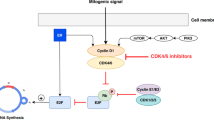Abstract
Purpose
Oxazaphosphorines, such as ifosfamide (IFA), are frequently used in the treatment of pediatric sarcomas. They are pro-drugs and undergo hepatic metabolism into the active moiety and potentially toxic by-products such as acrolein and chloracetaldehyde, which may cause hemorrhagic cystitis and encephalopathy, respectively. In addition, resistance to oxazaphosphorines can be mediated by overexpression of enzymes involved in their catabolism. Isophosphoramide mustard (IPM, palifosfamide) is the active moiety of IFA. In the current study, the activity of palifosfamide lysine (ZIO-201), a stable form of palifosfamide, was evaluated in a panel of sarcoma cell lines and tumor xenografts including oxazaphosphorine-resistant xenografts.
Methods
The cytotoxic effect of palifosfamide lysine was studied in osteosarcoma (OS), Ewing’s sarcoma (ES) and rhabdomyosarcoma (RMS) cell lines using the MTT assay. In vivo, the maximum tolerated dose (MTD) of palifosfamide lysine was determined in SCID mice based on a 3-day intravenous (IV) administration schedule. The effect on tumor growth and event-free survival was assessed at the MTD in all three sarcoma xenografts. In OS, cyclophosphamide (CPA)-resistant and -sensitive xenografts (OS31 and OS33, respectively) were evaluated for palifosfamide lysine activity. ALDH1A1 and ALDH3A1 gene expression data for the OS xenografts were mined from the Pediatric Preclinical Testing Program gene expression data. ALDH3A1 enzyme levels were compared between the CPA-resistant and -sensitive xenografts.
Results
Palifosfamide lysine was cytotoxic against all the cell lines tested with the IC50 ranging from 0.5 to 1.5 μg/ml except for OS222, which had an IC50 of 7 μg/ml. The IV MTD of palifosfamide lysine in mice was 100 mg/kg per day for three consecutive days. Tumor growth inhibition was seen in both OS31 and OS33 xenografts and the RMS xenograft resulting in a significant difference in event-free survival between the control and the treated groups. Differential gene expression of ALDH3A1 but not ALDH1A1 was noted in the OS31 xenograft. This was confirmed by RT-PCR and the ALDH3A1 enzyme assay. ALDH3A1 enzyme activity was measured at 100 mIU/mg of protein in OS31 xenograft but no significant activity was seen in the OS33 xenograft.
Conclusions
We conclude that palifosfamide lysine has broad activity in a panel of sarcoma cell lines. It inhibits tumor growth in OS and RMS xenografts. Furthermore, it is active against the CPA-resistant, ALDH3A1 overexpressing, OS xenograft suggesting that it might have the potential of overcoming this resistance mechanism against oxazaphosphorines and may be an active agent in resistant/relapsed sarcomas in patients.







Similar content being viewed by others
References
Zhang J, Tian Q, Yung Chan S, Cheun Li S, Zhou S, Duan W, Zhu YZ (2004) Metabolism and transport of oxazaphosphorines and the clinical implications. Drug Metab Rev 37:611–703
Sladek NE, Kollander R, Sreerama L, Kiang DT (2002) Cellular levels of aldehyde dehydrogenases (ALDH1A1 and ALDH3A1) as predictors of therapeutic responses to cyclophosphamide- based chemotherapy of breast cancer: a retrospective study. Cancer Chemother Pharmacol 49:309–321
Sreerama L, Sladek NE (2001) Primary breast tumor levels of suspected molecular determinants of cellular sensitivity to cyclophosphamide, ifosfamide, and certain other anticancer agents as predictors of paired metastatic tumor levels of these determinants. Rational individualization of cancer chemotherapeutic regimens. Cancer Chemother Pharmacol 47:255–262
Moreb JS, Muhoczy D, Ostmark B, Zucali JR (2007) RNAi-mediated knockdown of aldehyde dehydrogenase class-1A1 and class-3A1 is specific and reveals that each contributes equally to the resistance against 4-hydroperoxycyclophosphamide. Cancer Chemother Pharmacol 59:127–136
Struck RF, Davis RL Jr, Berardini MD, Loechler EL (2000) DNA guanine–guanine crosslinking sequence specificity of isophosphoramide mustard, the alkylating metabolite of the clinical antitumor agent ifosfamide. Cancer Chemother Pharmacol 45:59–62
Germann N, Urien S, Rodgers AH, Ratterree M, Struck RF, Waud WR, Serota DG, Bastian G, Jursic BS, Morgan LR (2005) Comparative preclinical toxicology and pharmacology of isophosphoramide mustard, the active metabolite of ifosfamide. Cancer Chemother Pharmacol 55:143–151
Houghton PJ, Morton CL, Tucker C, Gorlick R, Kolb EA, Zhang W, Smith MA (2007) The Pediatric Preclinical Testing Program: description of models and early testing results. Pediatr Blood Cancer 49:928–940
Moreb JS, Gabr A, Vartikar GR, Gowda S, Zucali JR, Mohuczy D (2005) Retinoic acid down-regulates aldehyde dehydrogenase and increases cytotoxicity of 4-hydroperoxycyclophosphamide and acetaldehyde. J Pharmacol Exp Ther 312:339–345
Sreerama L, Sladek NE (1997) Cellular levels of class 1 and class 3 aldehyde dehydrogenases and certain other drug metabolizing enzymes in human breast malignancies. Clin Cancer Res 3:1901–1914
Rekha GK, Sreerama L, Sladek NE (1994) Intrinsic cellular resistance to oxazaphosphorines exhibited by a human colon carcinoma cell line expressing relatively large amounts of a class 3 aldehyde dehydrogenase. Biochem Pharmacol 48:1943–1952
Friedman HS, Colvin M, Kaufmann SH, Ludeman SM, Bullock N, Bigner DD, Griffith OW (1992) Cyclophosphamide resistance in medulloblastoma. Cancer Res 52:5373–5378
Zhang J, Tian Q, Zhu YZ, Xu AL, Zhou SF (2006) Reversal of resistance to oxazaphosphorines. Curr Cancer Drug Targets 6:385–407
Zhang J, Tian Q, Chan SY, Duan W, Zhou S (2005) Insights into oxazaphosphorine resistance and possible approaches to its circumvention. Drug Resist Updat 8:271–297
Gale R, Van Vugt A, Rosen L, Chang L, Lorusso P, Valdivieso M, Malburg L, Struck R, Morgan L (2006) Phase-1 study of isophosphoramide (IPM)-lysine in advanced cancers. ASCO Annu Meet Proc 24:9524
Acknowledgment
The authors would like to thank Dr. L. Sreerama for his assistance with this research project.
Author information
Authors and Affiliations
Corresponding author
Rights and permissions
About this article
Cite this article
Hingorani, P., Zhang, W., Piperdi, S. et al. Preclinical activity of palifosfamide lysine (ZIO-201) in pediatric sarcomas including oxazaphosphorine-resistant osteosarcoma. Cancer Chemother Pharmacol 64, 733–740 (2009). https://doi.org/10.1007/s00280-008-0922-4
Received:
Accepted:
Published:
Issue Date:
DOI: https://doi.org/10.1007/s00280-008-0922-4




